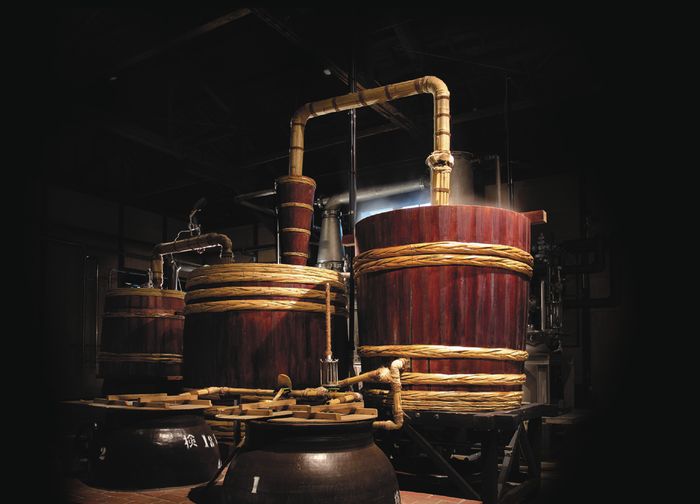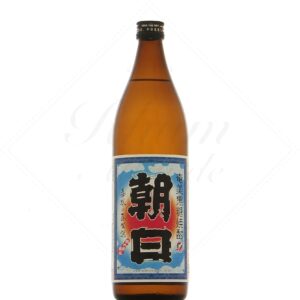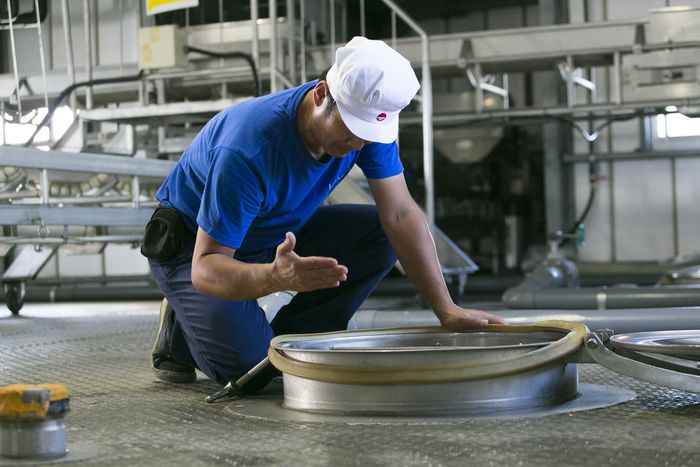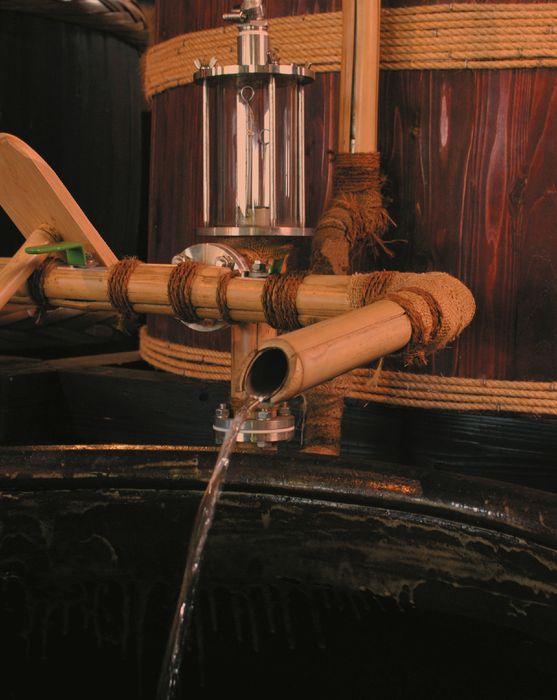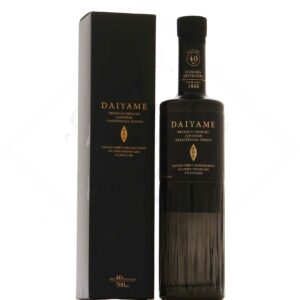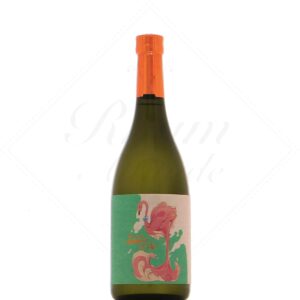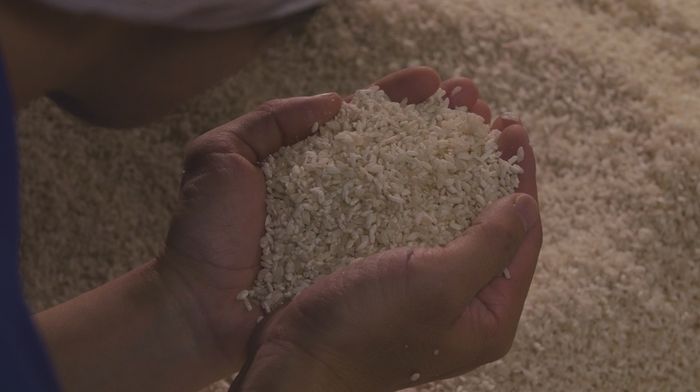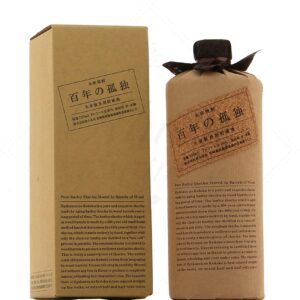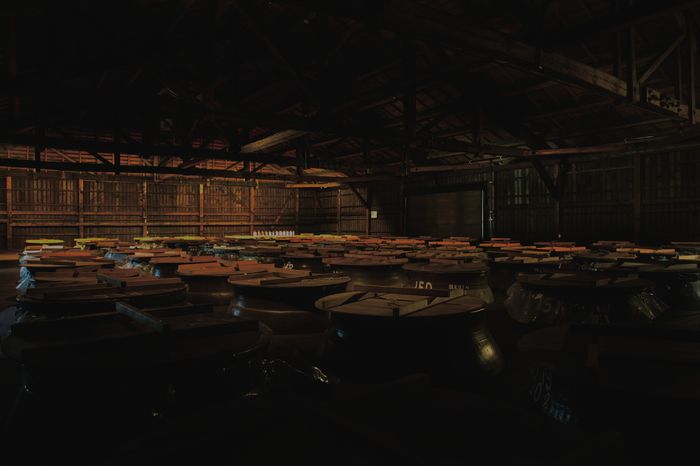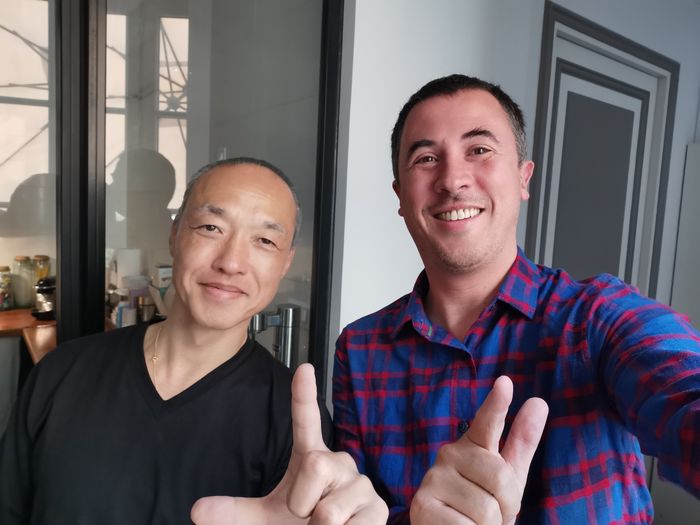
Our first selection of shochu arrives on Rhum Attitude! To discover this traditional Japanese brandy, we spoke to one of its best ambassadors:
Keiichiro Miyagawa is a great lover of sake, shochu and awamori, and has worked for many years to promote their recognition in France:
"I arrived in France in May 1990. I started working in a restaurant of the Suntory group, which owned Château Lagrange, 3rd classified growth of Saint-Julien, and which is also at the origin of the first whisky distillery in Japan , created in 1923.
I started as a maître d’hôtel – sommelier, then I became the director of the establishment until 2000. When the previous owner died, almost all of the group’s restaurants closed. I was then told “either you buy the restaurant or you go back to Japan”. I was young, and an 80-seat restaurant on the Champs Elysées already cost a lot of money. So I left Suntory but I still stayed in France, where I had the opportunity to work in fashion.
It is thanks to the company I worked for at the time as an agent that I am where I am today. It is there that I learned how to attract customers, and above all that I deepened my knowledge about import laws.
During this time, I continued to be interested in alcoholic beverages. I worked in a Michelin-starred restaurant, the Stella Maris, not far from the Arc de Triomphe. And then I went to Japan to open two restaurants, a gastronomic and a bistro, in Wakayama just outside Osaka.
In 2007, I started working in a large Japanese food store, Isse Workshop near Saint Augustin in Paris. That's where I started selling sake, including to Japanese restaurants. I offered Ginjo sake, which is a high-end product.
"It was complicated at first, the restaurateurs thought I was crazy because my sakes were expensive, but I worked every evening, presented my products, and then 3 years later, on the NHK channel, they announced a boom in Ginjo in Paris! It was the advent of a modern, fruity, elegant sake, like wine."
And then in 2011 we had some problems with the tsunami ( which caused the Fukushima nuclear accident, editor's note ). I was still alone at the time, I was working a lot, and unfortunately all the goods were blocked for almost a year.
Then, little by little, I started working with French gourmet restaurants. And then in 2015, I wrote a book in French about sake, the first of its kind. The same year, I went to Japan with French chefs, to organize sake tastings.
Later, with Xavier Thuizat, head sommelier, we had the idea of creating a competition. I took care of the organization, and he put together the juries. The first edition of the Kura Master competition took place in 2017. The objective was to get people talking about sake, particularly sommeliers, in order to reach the country's 8,000 or so wine merchants. It was the first major tasting in France, where we tasted 500 sakes. Then there were 700, 800, and 1,000 this year. Shochus also arrived at the competition in 2021. We managed to create a trend, by conveying a certain image of Japan, also thanks to an event called Matsuri Festival which welcomed 11,000 people.
Can you briefly introduce shochu to us?
First of all, it is a Japanese brandy, for which Koji is used. Distillation is done in a traditional still, in a single pass. The result is simple, and it allows the main ingredient to be presented directly. When distilled in a single pass, we obtain a brandy that is between 36 and 42% alcohol approximately, which is then diluted to 25% (this is the case for 90% of the Japanese market).
For shochu, there are about fifty authorized ingredients. The three main ones are rice, of course; barley, as for whisky; and sweet potato. It was on the island of Sakurajima that the latter began to develop. This island is part of the Satsuma Shochu appellation ( Kagoshima sweet potato shochu, editor's note ), and benefits from active volcanic soil where ash rains down all year round. This volcanic soil, like sand, is not suitable for rice. On the other hand, it works very well with sweet potato or white radish.
“Buckwheat or cane sugar are also important ingredients.”
When talking about rice shochu, we can distinguish between northern and southern shochus. For example, there is Kuma Shochu, an appellation of origin from the Kumamoto region, and Awamori from the Okinawa region.
In the south, indica rice is preferred because of a humid and warm climate, similar to the Thai climate where this variety comes from. It is a thin and long rice, with less starch than japonica rice , which is smaller and very sticky, and is used for Kuma Shochu. Kuma Shochu and Awamori are therefore two completely different products, although both are produced from rice.
What are the origins of Shochu?
Distilled beverages originally came to Japan via China and Korea, mostly in the south, around the 15th century. The first Japanese distillery was recorded in 1549. But at the time there were no sweet potatoes, and even in Kagoshima they made rice shochu. Kumamoto is the first region of brandy, or at least the first where a still was recorded. The ancestor of shochu was then called "lambiki", it was nothing more or less than distilled sake. Okinawa is also mentioned among the first producing regions, but there is not enough evidence.
"Honkaku Shochu" means authentic, traditional shochu. Originally, it was called "Otsurui Shochu" (distilled in one go, referred to as inferior), as opposed to "Korui Shochu" (modern column-distilled shochu, superior). Before distillation columns arrived in Japan , there was only one type of shochu. The new, more modern, cleaner, higher alcohol shochu was therefore referred to as superior. The real shochu, with more taste, was thus unfairly renamed "inferior". It was then renamed "Honkaku" (real) by Kirishima Shuzo in the 1970s.
Can you explain to us what koji is, and what its role is?
Koji is a mold that transforms starch into glucose ( the equivalent of malting barley in whisky, editor's note ), and its enzymes transform proteins into amino acids which are the source of umami.
It arrived in Japan in the 6th century, and is used in many aspects of Japanese gastronomy, such as soy sauce, miso, mirin, etc.
“Ki koji”, yellow koji, is the one used for sake.
For shochu, black koji ("kuro koji") is the most commonly used. It produces a lot of citric acid, which helps the fermentation process run smoothly, but this acidity is not found in the taste, except in rare and mysterious cases.
This acidity prevents contamination, it kills all the microbes that tend to develop, especially at high temperatures like in the south. In Okinawa for example, for the Awamori appellation, only black koji is used.
“One day an employee of a koji manufacturer accidentally found a white koji among the black koji.”
This discovery is quite recent. If black koji gives slightly richer tastes and more body, white koji gives finer, more dynamic things.
To begin, you need to prepare the koji, on a base of steamed rice, for a first fermentation. This can be done on other bases such as barley or sweet potato, but it is very difficult, so rice is much more common. Then, you add an ingredient for a second fermentation, such as sweet potato.
To summarize, we start with a starter culture, as for natural wine, then we move on to the main fermentation.
How is Honkaku Shochu distilled?
Initially, distillation was done only in a traditional still ( at atmospheric pressure, editor's note ) but vacuum distillation was introduced quite recently, 20 or 30 years ago. I was also able to visit one of the first houses that did vacuum distillation, in Fukuoka. It was the grandfather of the current distiller who developed this system, initially for the production of eau-de-toilette. He imagined that vacuum distillation of shochu, therefore at a lower temperature, could be interesting and could give a more subtle taste. Vacuum distillation highlighted the fruity, floral qualities, such as banana, melon, apple. This did not exist before.
Both distillations are practiced today, and one can also compose by blending the spirits. This allows to bring subtlety, when the main ingredient is too present.
“In Japan, shochu is consumed while eating, so we are mainly looking for balance.”
If you want to taste the shochu pure and undiluted, there are more powerful types, still-still, over 35%. You can taste them pure and of course in cocktails. This is the case of Daiyame 40% , a very aromatic sweet potato shochu. This may appeal to lovers of spirits that are more traditionally found in France. Daiyame, for example, I taste it simply with an ice cube, or diluted with 30% water and an ice cube, it is a magnificent balance.
On the other hand, the classic shochus that are quite low in alcohol correspond to a current demand from bartenders and customers for less strong alcohols, but also without sugar. It should be remembered that there is 0% sugar in shochu.
Shochu also allows you to explore the territory of cocktails…
Until now, shochu was designed for an older consumer. But the clientele is getting younger. We went to Japan last August, with Christophe Davoine, MOF Barman, Baptiste Bochet who wrote the book "Saké" with Youlin Ly ( and Fabien Humbert de Rumporter editor's note ) and Julien Echasserieau, French Barman Champion. We visited quite a few estates, and we saw that many of them were evolving towards a modern shochu, aimed at young people.
"The trend of "low alcohol" and "low sugar", as well as the craze for cocktails, mean that we are in an ideal era for shochu!"
For a cocktail , shochus with more than 35% are preferable in order to tolerate dilution. Most shochus are around 25%, which is already quite light, and which does not necessarily require dilution. But this is true for France, because in Japan, we consume shochu while eating. In this case, we consume it rather "oyuwari" ( diluted with hot water, editor's note ), or even "maewari". Maewari is prepared a few days in advance. We always put the water first, then the shochu, then we put it aside for 2 or 3 days, it is excellent. For me the perfect mixture is 60% shochu and 40% water. We can dilute even more in Japan, but it is too weak for me, I am French now!
Sweet potato shochu (imo shochu) is particularly well suited to cocktails, right?
There are many varieties of sweet potatoes: white skin, red skin, white flesh, yellow flesh… Each variety gives different tastes. In the 1970s, any variety was used because there was no selection, they were always mixed.
With atmospheric pressure distillation, you could directly smell the raw material, the sweet potato , but that was it. But today, low-pressure distillation has changed things. We select more, we try to smell the differences between the varieties, like the Beni Otome ("beni": red, and "otome": young girl) with purple skin and a very interesting aroma, which above all gives a lot of body to the shochu.
The selection and low-pressure distillation make it possible to obtain very interesting and very fruity things, like Flamingo Orange for example. We have a white spirit that is different from a gin. The latter is made from neutral alcohol and added botanicals, while Honkaku Shochu is only distilled once and retains the aromas of the raw material. Shochu also has the particularity of being able to be tasted straight out of the still, unlike whisky, cognac or calvados. The aging also shows that it reacts quickly to wood and maturation.
" Sake lees shochu is also interesting in cocktails. We can smell aromas that resemble Roquefort, parsley, spicy, peppery aromas..."
Okinawan Awamori is also made from rice only. You can often smell iodized notes. The rice used is indica rice ( Thai rice, editor's note ), not japonica rice . This is due to the geography of Okinawa, in the south of the Japanese archipelago, close to Thailand and its climate. There is more humidity and more heat, and Japanese rice cannot adapt. Moreover, it does not adapt to Kagoshima either. It is only from Kumamoto, in the middle of the island of Kyushu, that you find Japanese rice shochu. Further south, it does not work.
Previously, rice was imported from Thailand, but today indica rice is grown in Okinawa, and more and more. After the war, the Americans cut down the rice fields of the breweries ( the Americans occupied Japan between 1945 and 1952, editor's note ). A difficult time followed, the estates were weakened and became scarce. Since then, farmers and brewers/distillers establish contracts, but quality management remains very complicated. Farmers often favor quantity over quality. They use more chemicals for example. This is not at all a good thing for breweries.
But the law is gradually changing. Estates are only just beginning to be able to buy rice fields and control their quality themselves. There are more and more farmer brewers, whether it be shochu or sake.
Are there different “varieties” of rice?
The two most important rice varieties for Japanese sake are Yamada Nishiki, which is mainly found in Hyogo Prefecture, and Gohyakumangoku. "Gohyakuma" means 5 million, and "goku" is an old unit of measurement corresponding to 180 liters. ( Thus Gohyakumangoku means "5 million units", in commemoration of the yield of Niigata rice surpassing the five million goku mark in 1957, the year the variety was registered, editor's note ).
In 2020, Yamada Nishiki accounted for 30% of total sake production, and Gohyakumangoku, 21%. More than half of the production is therefore made from just two grape varieties. We can then cite Miyama Nishiki from the Nagano region (7%), Akita Komachi (2.7%) and Omachi (2.4%). Each region then has its local varieties.
Are there any aged shochus ?
Aging ( or rather resting/maturation, editor's note ) is generally done for 6 months. It is increasingly done in buried jars for the smallest houses, but most of the time in enameled or stainless steel vats. We also have more and more oak barrels and longer aging, especially for barley and rice shochu . We even have some small finishes on sweet potato shochus.
Editor's note: For awamori "kusu" (aged 3 years in terracotta pots), a system similar to the solera is often used. The spirits are assembled so that the older ones "educate" the younger ones.
Thank you Kei for this exciting presentation, and now it’s time for the tasting, to discover the world of shochu!
Thanks to Hamada Shuzo Distillery for the photos that illustrate this article (all rights reserved).
